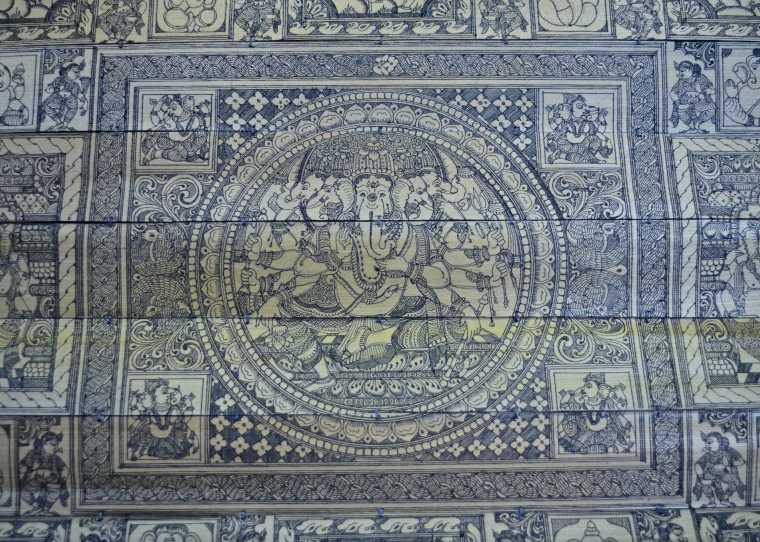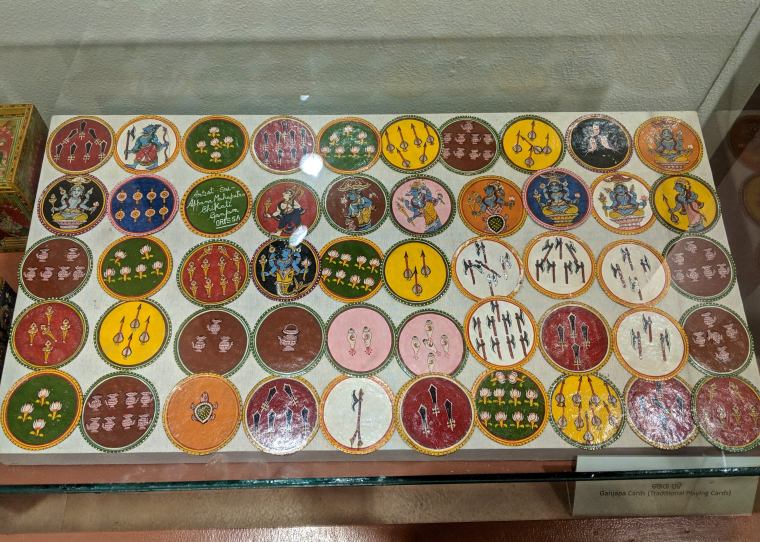Traditional crafts of Odisha…
Odisha’s magnificent temples and silky beaches have been working overtime to pull in the throngs forever. But there’s so much more under the shroud of modesty surrounding this nearly-neglected eastern state of India. Like its untouched forests, secret gorges, abundant wildlife and a rich treasury of traditional arts and crafts. From elaborate stone carving and mask-making to fine silver filigree and handloom, a handicraft tour of Odisha can prove to be an adventure as well as a challenge. Smart traveller alternative? Kala Bhoomi, the Crafts Museum in the capital city of Bhubaneshwar.
Every local art form lovingly curated, impeccably designed exhibit galleries and in-depth expert-guided tours by Ekamra Walks make it a mecca for the artistically inclined. Set aside an afternoon to soak in the soul of the city through the unspoken stories of its centuries-old crafts. Here’s a lowdown of three exquisite handicrafts from Odisha that left the deepest impressions on my heart.
Painstaking palm-leaf narratives
Celebrate the tradition: Flash-backing to 2000 years may seem like a feat, till you come across a specimen of a time-worn Talapattachitra (literally ‘palm leaf illustration’). In the heritage of village of Raghurajpur, just an hour away from Odisha’s capital, Bhubaneshwar, yesterday merges seamlessly with today. Lipikaars (scribes) spend their entire lives creating hand-written copies of sacred verses and ancient literature on palm leaves, just like ancient times, when they did so under the patronage of kings and temple authorities. From decorative manuscripts to illustrative fables and folklore to art form…its no surprise why this rare craft is also Odisha’s most beloved. After all, the roots of its inspiration are Lord Jagannath and the Vaishnava cult.
Applaud the craft: Imagine a vintage-style scroll made of faded, hardened leaves that cleverly packs up into a compact pile of slim folds, held together by fragile thread. Etched meticulously and minutely with finest of stencilled drawings using an iron stylus. Recounting episodes from mythology, including Ramayana and Mahabharata. Flaunting lace-like finery. Duping you with a print-like quality. Always intricate and very expressive. Bold and striking in lamp black or vibrant and bright in natural colours. Every medium it has touched beyond the original palm leaves (cloth, paper, terracotta and even walls) over the centuries, has only added to its undying grace. A quintessential symbol of Odisha culture to treasure for all times.






Embrace the art: Watch a magical specimen come to life under expert hands in one of the hundreds of workshops in the houses of Raghurajpur. Let your heart be the judge, as you scrounge for a piece that will find a place of honour in your own home. A set of Ganjifa cards, that ancient palace game (a Persian import), which the masses made their own. It even served as an intricate recitation of Hindu scriptures because of its detailed and varied imagery. An irresistible indulgence…whether as a card game, framed wall hangings, or even glass coasters. Or a classic black beauty in true talapattachitra style, like the one that I fell for?
Muted metallic monologues
Celebrate the tradition: Its a timeline of at least 5000 years. Indigenous tribes stumbled upon the abundance of natural resources in the mineral-rich central Indian belt and a streak of ingenuity transformed lifestyles forever. A never-seen-before line of craftsmen hit the market with uniquely handcrafted metal ware, Inspired by indigenous folk culture and traditional motifs, such as animals, birds, cattle, humans and gods-goddesses. These metal-smiths of the nomadic Dhokra tribe went from one village to another earning a living by selling their goods, mostly ceremonial and religious figurines, ornaments and kitchen ware. The craft has miraculously survived the test of time. Odisha is still proud home to the distinctive Dhokra art.
Applaud the craft: Have a soft corner for the delightfully disproportionate, charmingly crooked and perfectly imperfect? Then the primitive starkness of Dhokra’s old-gold, antiquity will fascinate you. Until you step behind the shopping shelf into the workshop. Where artisans fashion metal objects from bronze and copper-based alloys using an unusual method called ‘lost wax casting’. Bees-wax wires are wrapped around a coarse clay model till a clearer replica emerges and coated with a second, finer clay layer to create a final mould. Molten metal is poured into the mould, the cast is removed and ornamental finishing touches are added. A single piece could take up to a month or two to be created. Factoid: one of the earliest known lost wax casting artefacts known to mankind is the legendary dancing girl of Mohenjodaro. Head bow!



Embrace the art: Made of scrap metal and eco-friendly, but that’s not the reason Dhokra continues as an unbroken tradition. Reinvention is. From one-of-a-kind utility items like door handle, ash-tray, candle-stand, photo-frame and tissue box to unique home decor, buttons and tribal jewellery, creators are determined to stick around for eternity. My find? An languidly reclining, skirt-clad lady with a literary bent of mind. What better quirky addition for the home library?

Eloquently earthy tales
Celebrate the tradition: An unexpected choice, in comparison to other better known crafts synonymous with Odisha, but terracotta makes a prime target for its ancestry…it’s as old as the Indus Valley civilisations of Harappa and Mohenjodaro. One of the earlier mediums used by humans, to promote settled living…whether as vessels, houses, decoration, jewellery, art, toys, religious figurines, using clay from rich alluvium silt of river valleys, it continues to reign supreme in its own way, even in the millennial age. Which medieval town would have its medieval tag without those red-brick roofs?
Applaud the craft: Huge cooking pots, massive storage containers, everyday utensils, lamps, animal figurines, roof tiles and deity images…terracotta offers flexibility for endless applications. Not just utilitarian, but heavily adorned with colors, artistic outlines and scalloped edges too. Items created in clay by the terracotta process are treated with partially dried refined clay and then then cast into a mould, cooked in a hot furnace or over combustible material and dried in open air. A process which looks fairly simple but requires dexterity and delicacy of hands. One trial pottery class moulding wet clay into the simplest of shapes on a revolving potter’s wheel, is revelation enough. A split-second distraction can spells disaster. Best recommendation for site visit beyond the city? Baleshwar in western Odisha. Where traditional terracotta is still churned out tirelessly as the local mainstay.




Embrace the art: Eyebrow-raising element that will up the fascination factor? Unique roof figurines in terracotta that locals have been using to decorate the clay roof tiles of their houses since eons. Birds, squirrels, monkeys and mice, planted to scare away wild animals the way that scarecrows work in fields. With the cutest of expressions…confused to woeful to furious to suspicious…these symbols of earth and nature are worth collecting to add to the atmosphere of one’s urban garden. Emojis of the past…and endearing symbols of the deeply-ingrained culture, binding us together, across the length and breath of our country.
Pin this post for later!!




Never really been into crafts but the older I get, I seem to be appreciating it more. I love the fact that there is so much detail and pride which goes into them is probably better than just looking at them and buying it straight off a shelf in a shop without thinking about all the hard work which goes into them.
LikeLiked by 1 person
You’re right, I have also grown to appreciate art and culture much more over the years.
LikeLike
These artisanal crafts are pretty impressive, I love getting to know the people behind the craft. Buying local products not made in a factory is one of my goals when I travel.
LikeLiked by 1 person
Artisanal reminds us of the base of trade of yesteryears.
LikeLike
Indian art has always intrigued me. It’s so unique and feels so different from art from other areas of the world. It’s so beautiful! I just love the bronze and copper art works!
LikeLiked by 1 person
Yes, India is the cradle of one of the oldest civilisations and our crafts reflect all that rich heritage.
LikeLike
As a crafter, I’m always interested in handicrafts when I travel. I especially love the palm leaf illustrations, the detail is amazing! Such dedicated work! This is the type of things I would consider bringing back from my travels…
LikeLiked by 1 person
These are the souvenirs that uplift the travel experience, aren’t they?
LikeLike
Hands down I would want to get a palm leaf narrative to bring home! The intricate, vibrant colors and beautiful details are truly amazing!
LikeLiked by 1 person
That is the ultimate choice of all Odisha crafts. Great pick, Heather! Seeing them created in front of one’s eyes can be so humbling.
LikeLike
Well, excellent post!! Indigenous art, handicrafts and the stories of the locals who are involved in such traditional and generational vocations have always interested me and I got soaked into your post. The stories behind the Talpattachitra is fascinating. Hoping that Indian Tourism will soon start looking into these traditional treasure troves in a more meaningful way and bring value to the practitioners. Thanks for sharing 🙂
LikeLiked by 1 person
Thank you so much for your lovely comment. India is full of never-ending new finds and the more I travel through the country, the more I admire the richness of our heritage. Odisha crafts were a big surprise.
LikeLike
Being the mother of an artist has really opened my eyes to amazing arts like these handicrafts from Odisha. My artist daughter is currently spending the summer in India, and I can tell by her daily sketch posts on Instagram that the history and culture is definitely expanding her horizons and influencing her art. (Just like travel and exploring the world SHOULD influence and shape a person!)
LikeLiked by 1 person
It’s wonderful to hear about your daughter pursuing art with a heritage twist. She couldn’t have chosen a better place than India for her summers. The canvas is endless !!
LikeLike
I love your inclusion of various media in this post. I have to say, the Talapattachitra is my favorite. The detail on them is just incredible, and I can only imagine the kind of commitment and dedication the Lipikaars have to their craft.
LikeLiked by 1 person
Talapattachitra is iconic, and yes, the craftsmen are devoted to it, since it has religious significance too.
LikeLike
What an interesting read! I would fall down the rabbit hole in a hurry browsing cool things like this. I love the prints best but the animal heads are so cool! I must get to India!
LikeLiked by 1 person
Yes, you must get to India, and include Orissa in your itinerary.
LikeLike